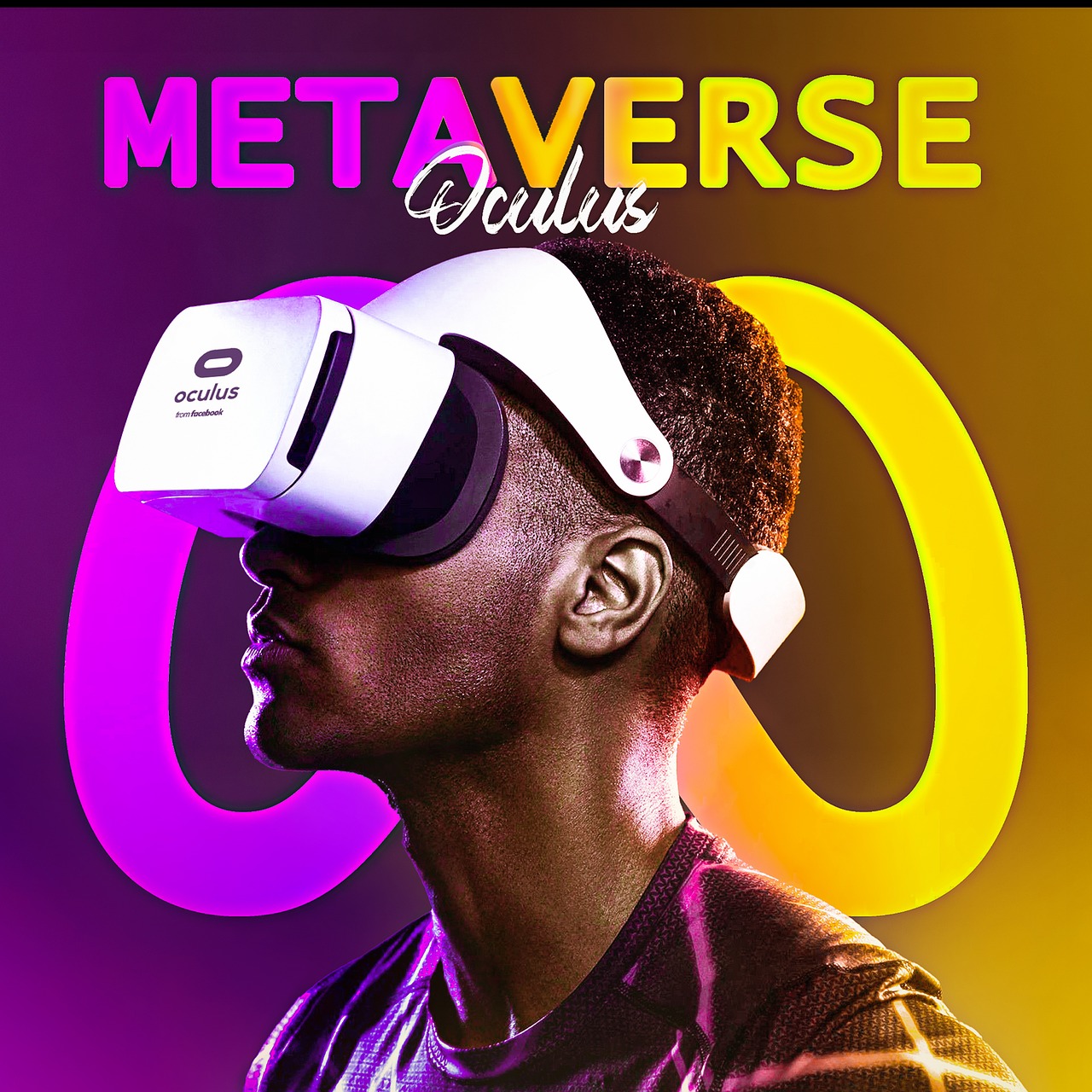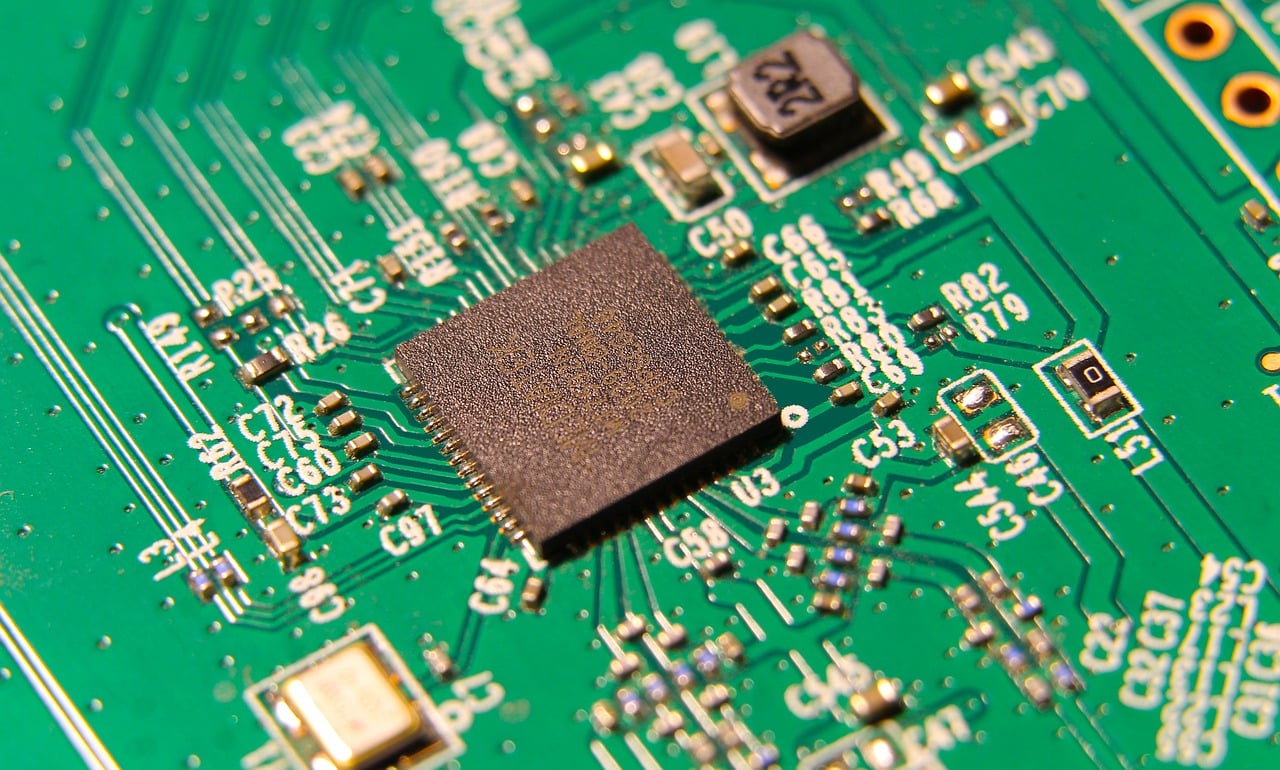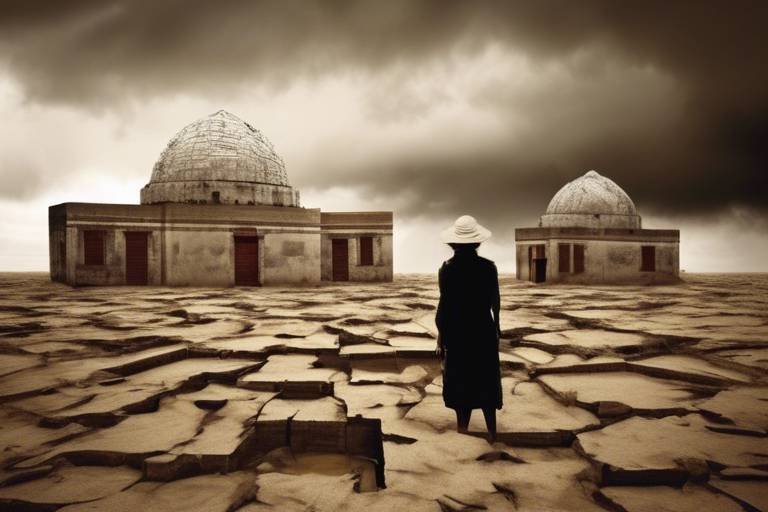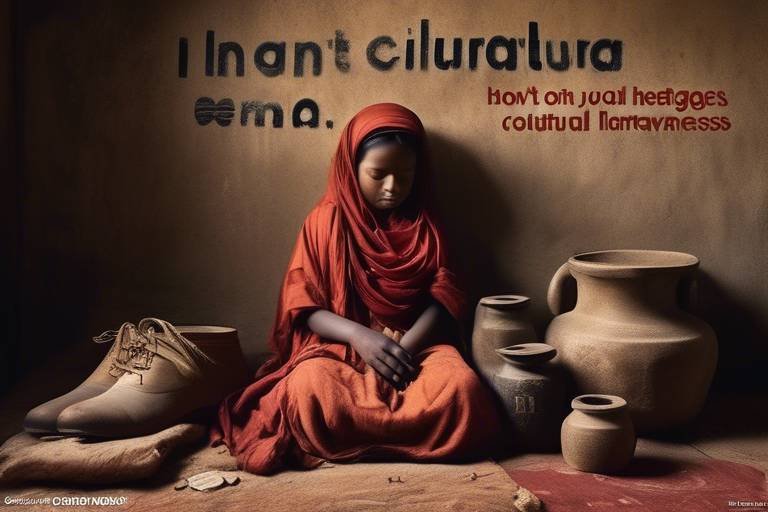How Technology is Transforming Cultural Heritage Conservation
Technology has become a powerful force in the realm of cultural heritage conservation, reshaping the way we preserve and protect our rich history for the future. From advanced 3D scanning and printing techniques to immersive virtual reality experiences, the innovative applications of technology are revolutionizing the field of cultural heritage conservation.
One of the most groundbreaking advancements in this field is the use of 3D scanning and printing technologies. By creating precise replicas of cultural artifacts and structures, conservation efforts are bolstered, providing invaluable resources for both research and education. These accurate replicas not only aid in restoration projects but also ensure the accessibility and longevity of these treasures for generations to come.
Virtual reality (VR) experiences offer a new dimension to cultural heritage exploration. Through immersive VR technologies, individuals can traverse ancient sites and museums from any corner of the globe. This not only enhances global awareness and appreciation of cultural heritage but also provides a fresh perspective on these historical marvels.
Augmented reality (AR) applications are another game-changer in the conservation landscape. By overlaying digital information onto physical artifacts and sites, AR enhances visitor experiences and creates interactive storytelling opportunities. This dynamic approach breathes life into history, engaging audiences in a whole new way.
Remote sensing techniques, such as LiDAR and satellite imaging, play a crucial role in monitoring and assessing the condition of cultural heritage sites. By enabling proactive conservation planning and identifying potential risks, these technologies empower conservationists to safeguard our heritage from threats and degradation.
Big data analytics have also found their place in cultural heritage conservation. By analyzing vast amounts of data, decision-making processes become more informed, leading to efficient resource allocation and preservation strategies. This data-driven approach ensures that conservation efforts are targeted and effective.
The integration of artificial intelligence (AI) in conservation tools has revolutionized the identification, classification, and restoration of cultural artifacts. AI-powered algorithms streamline workflows, allowing experts to focus on intricate conservation tasks, ultimately enhancing the efficiency and precision of conservation efforts.
Digital documentation and archives are pivotal in ensuring the preservation of cultural heritage for future generations. By creating comprehensive digital records of sites and objects, researchers, historians, and conservationists have access to a wealth of information, fostering a deeper understanding and appreciation of our shared heritage.
Crowdsourcing conservation efforts have transformed the way the public engages with cultural heritage preservation. Through collaborative initiatives, individuals contribute to conservation projects, fostering a sense of community ownership and widespread involvement in safeguarding our cultural legacy.

3D Scanning and Printing
Exploring the innovative ways in which technology is revolutionizing the preservation and restoration of cultural heritage sites and artifacts, ensuring their longevity and accessibility for future generations.
3D scanning and printing technologies have become invaluable tools in the conservation of cultural heritage. By utilizing advanced 3D scanning techniques, experts can create highly accurate digital replicas of artifacts and structures. These replicas not only aid in conservation efforts by providing detailed reference models but also serve as valuable resources for research and educational purposes.
Through the process of 3D printing, these digital replicas can be transformed into physical models, allowing conservationists to test restoration techniques and create replicas for display in museums. This technology opens up new possibilities for preserving cultural heritage by enabling the recreation of delicate or damaged artifacts with precision and care.
Furthermore, 3D scanning and printing facilitate the sharing of cultural heritage beyond physical boundaries. Museums and institutions can create digital archives of their collections, making them accessible to a global audience. This democratization of cultural heritage fosters a deeper appreciation and understanding of diverse historical artifacts and sites.

Virtual Reality (VR) Experiences
Virtual Reality (VR) Experiences are revolutionizing the way we interact with cultural heritage. Imagine being able to step back in time and explore ancient ruins or walk through a museum thousands of miles away, all from the comfort of your own home. VR technology offers immersive experiences that transport users to different eras and locations, allowing them to see and interact with historical artifacts in a whole new way.
Through VR, individuals can not only view these cultural treasures up close but also gain a deeper understanding of their significance and historical context. It's like having a personal tour guide leading you through the annals of history, making learning about different cultures and civilizations more engaging and accessible than ever before.
Moreover, VR experiences are not limited by physical boundaries. They break down barriers to access cultural heritage sites that may be difficult to visit in person due to distance, cost, or restrictions. This technology democratizes the exploration of our shared history, making it available to a global audience and fostering a sense of interconnectedness among people from diverse backgrounds.
By leveraging VR technology, cultural institutions can engage with audiences in innovative ways, offering interactive exhibits and educational programs that cater to a tech-savvy generation. Museums and heritage sites can now reach a wider demographic, including younger audiences who may be more inclined to explore history through digital mediums.
Overall, Virtual Reality (VR) Experiences are reshaping the landscape of cultural heritage conservation by making it more inclusive, interactive, and engaging. They are not just tools for entertainment but powerful instruments for preserving and sharing our rich cultural legacy with present and future generations.

Augmented Reality (AR) Applications
Augmented Reality (AR) applications have revolutionized the way we interact with cultural heritage sites and artifacts. By overlaying digital information onto physical objects and locations, AR technology enhances the visitor experience by providing interactive and immersive storytelling opportunities. Imagine walking through a museum and using your smartphone or AR glasses to see virtual reconstructions of ancient civilizations right before your eyes. This technology brings history to life in a way that traditional exhibits cannot, engaging visitors of all ages in a dynamic and educational experience.
One of the key benefits of AR applications in cultural heritage conservation is the ability to offer real-time information and contextual details to visitors. For example, when looking at a historical artifact through an AR app, users can access information about its origin, significance, and historical context, enriching their understanding and appreciation of the object. This interactive approach not only educates but also captivates audiences, making the conservation of cultural heritage more accessible and engaging to a wider audience.
Moreover, AR applications play a crucial role in preserving fragile artifacts and sites by reducing physical interaction. Instead of handling delicate objects, visitors can use AR technology to explore 3D models and digital reconstructions, minimizing the risk of damage and deterioration. This innovative approach not only safeguards the integrity of cultural heritage but also ensures its longevity for future generations to enjoy.
Furthermore, AR applications have the potential to transform traditional museum experiences by offering personalized and customizable tours. Visitors can tailor their exploration based on their interests, accessing additional information, multimedia content, and interactive elements through AR interfaces. This customization enhances visitor engagement and allows for a more immersive and memorable experience, encouraging repeat visits and continued interest in cultural heritage conservation.

Remote Sensing Techniques
Remote sensing techniques have revolutionized the field of cultural heritage conservation by providing invaluable tools for monitoring and assessing the condition of heritage sites. One of the key technologies used in remote sensing is LiDAR, which stands for Light Detection and Ranging. LiDAR utilizes laser pulses to create detailed 3D maps of cultural heritage sites, allowing conservationists to accurately measure features and detect changes over time. This technology enables experts to identify potential risks, such as erosion or structural damage, before they escalate, leading to more proactive conservation planning.
In addition to LiDAR, satellite imaging plays a crucial role in remote sensing techniques for cultural heritage conservation. Satellite images provide a bird's eye view of heritage sites, allowing conservationists to monitor large areas efficiently and identify changes that may not be visible from the ground. By analyzing satellite images, experts can track environmental factors, such as vegetation growth or land use changes, that could impact the preservation of cultural heritage sites.
Remote sensing techniques not only help in monitoring the condition of heritage sites but also aid in the identification of potential threats and risks. By combining data from LiDAR, satellite imaging, and other remote sensing technologies, conservationists can create comprehensive assessments of heritage sites, highlighting areas that require immediate attention and guiding conservation efforts effectively. These advanced techniques contribute to the long-term preservation of cultural heritage, ensuring that future generations can continue to appreciate and learn from these valuable assets.

Big Data Analytics
Big Data Analytics in cultural heritage conservation has revolutionized the way experts approach preservation strategies. By harnessing the power of big data, researchers can analyze vast amounts of information related to cultural heritage sites, artifacts, and environmental factors. This analytical approach enables data-driven decision-making processes, leading to more efficient resource allocation and targeted conservation efforts.
Through the utilization of advanced technologies, such as machine learning algorithms and data mining techniques, big data analytics can uncover valuable insights that may have otherwise gone unnoticed. These insights help conservationists understand patterns, trends, and potential risks to cultural heritage sites, allowing for proactive conservation planning and the implementation of preventive measures.
Moreover, big data analytics play a crucial role in monitoring the condition of cultural heritage sites over time. By collecting and analyzing data from various sources, including sensors, satellite imagery, and historical records, experts can assess the impact of environmental changes, human activities, and natural disasters on these sites. This proactive monitoring approach enables early detection of deterioration and facilitates timely intervention to mitigate potential risks.
Furthermore, the integration of big data analytics in cultural heritage conservation facilitates collaboration and knowledge sharing among experts worldwide. By centralizing data in digital repositories and creating interactive platforms for information exchange, researchers can access valuable resources, share best practices, and collaborate on conservation projects. This collaborative effort enhances the collective knowledge base and promotes innovation in the field of cultural heritage preservation.

Artificial Intelligence (AI) Conservation Tools
Artificial Intelligence (AI) is revolutionizing the field of cultural heritage conservation with its advanced tools and algorithms. These AI-powered tools play a crucial role in the identification, classification, and restoration of cultural artifacts, streamlining conservation workflows and enabling experts to focus on more complex tasks. By harnessing the capabilities of AI, conservationists can enhance the efficiency and accuracy of their work, ensuring the preservation of cultural heritage for future generations.

Digital Documentation and Archives
Exploring the innovative ways in which technology is revolutionizing the preservation and restoration of cultural heritage sites and artifacts, ensuring their longevity and accessibility for future generations.
Utilizing advanced 3D scanning and printing technologies to create accurate replicas of cultural artifacts and structures, aiding in conservation efforts and providing valuable resources for research and education.
Offering immersive virtual reality experiences that allow individuals to explore ancient sites and museums from anywhere in the world, providing a new perspective on cultural heritage and promoting global awareness and appreciation.
Implementing augmented reality applications to overlay digital information onto physical artifacts and sites, enhancing visitor experiences and offering interactive storytelling opportunities that bring history to life in engaging ways.
Utilizing remote sensing technologies such as LiDAR and satellite imaging to monitor and assess the condition of cultural heritage sites, enabling proactive conservation planning and the identification of potential risks and threats.
Harnessing the power of big data analytics to analyze vast amounts of information related to cultural heritage conservation, facilitating data-driven decision-making processes and enabling more efficient resource allocation and preservation strategies.
Developing AI-powered tools and algorithms to assist in the identification, classification, and restoration of cultural artifacts, streamlining conservation workflows and enabling experts to focus on more complex conservation tasks.
Creating comprehensive digital documentation and archives of cultural heritage sites and objects, ensuring their preservation for future generations and providing valuable resources for researchers, historians, and conservationists.
Engaging the public in conservation efforts through crowdsourcing initiatives that allow individuals to contribute to the preservation of cultural heritage, fostering a sense of community ownership and promoting widespread awareness and involvement.
Q: How is technology improving the conservation of cultural heritage?
A: Technology is enhancing conservation efforts through tools like 3D scanning, virtual reality experiences, and AI-powered restoration algorithms, making preservation more efficient and accessible.
Q: Why is digital documentation important for cultural heritage conservation?
A: Digital documentation ensures the preservation of cultural heritage for future generations, providing valuable resources for research, education, and conservation planning.
Q: How can the public contribute to cultural heritage conservation?
A: The public can participate in conservation efforts through crowdsourcing initiatives, volunteering time and resources to help preserve and protect cultural heritage sites and artifacts.

Crowdsourcing Conservation Efforts
Crowdsourcing conservation efforts have emerged as a powerful tool in the preservation of cultural heritage, allowing individuals from around the world to contribute their time and expertise to safeguarding valuable artifacts and sites. By harnessing the collective knowledge and passion of a diverse group of volunteers, crowdsourcing initiatives can significantly enhance conservation projects and promote a sense of shared responsibility for our shared cultural heritage.
One of the key benefits of crowdsourcing in conservation is the ability to engage a wide range of participants, including experts, enthusiasts, and the general public. This inclusive approach not only brings together individuals with different skill sets and backgrounds but also fosters a sense of community ownership and pride in the preservation of cultural treasures.
Through crowdsourcing platforms and projects, volunteers can contribute in various ways, such as transcribing historical documents, identifying artifacts in digital archives, or even participating in fieldwork and restoration activities. This distributed model of collaboration not only accelerates the pace of conservation efforts but also creates opportunities for knowledge sharing and skill development among participants.
Furthermore, crowdsourcing conservation efforts can help raise awareness about the importance of cultural heritage preservation and inspire a new generation of conservationists and advocates. By involving the public in hands-on activities and decision-making processes, these initiatives promote a deeper understanding of the value of our shared heritage and encourage active involvement in its protection.
Frequently Asked Questions
- What is the significance of 3D scanning and printing in cultural heritage conservation?
3D scanning and printing play a crucial role in cultural heritage conservation by allowing for the creation of accurate replicas of artifacts and structures. These replicas aid in preservation efforts, serve as valuable research and educational tools, and help in mitigating risks to the original artifacts.
- How do virtual reality experiences contribute to the preservation of cultural heritage?
Virtual reality experiences offer individuals the opportunity to explore ancient sites and museums in an immersive way, regardless of their physical location. By providing a unique perspective on cultural heritage, VR experiences promote global awareness, appreciation, and accessibility to these historical treasures.
- What role does augmented reality play in enhancing visitor experiences at cultural heritage sites?
Augmented reality applications overlay digital information onto physical artifacts and sites, creating interactive and engaging storytelling experiences for visitors. This technology brings history to life in innovative ways, enhancing visitor engagement and understanding of cultural heritage.
- How does big data analytics benefit cultural heritage conservation efforts?
Big data analytics enables the analysis of vast amounts of information related to cultural heritage conservation. By facilitating data-driven decision-making processes, this technology helps in resource allocation, risk assessment, and the development of efficient preservation strategies for cultural artifacts and sites.
- What are the advantages of crowdsourcing conservation efforts in cultural heritage preservation?
Crowdsourcing conservation efforts involve the public in the preservation of cultural heritage, fostering a sense of community ownership and promoting widespread awareness and involvement. This collaborative approach enhances conservation outcomes and ensures the long-term sustainability of cultural heritage sites and objects.



















